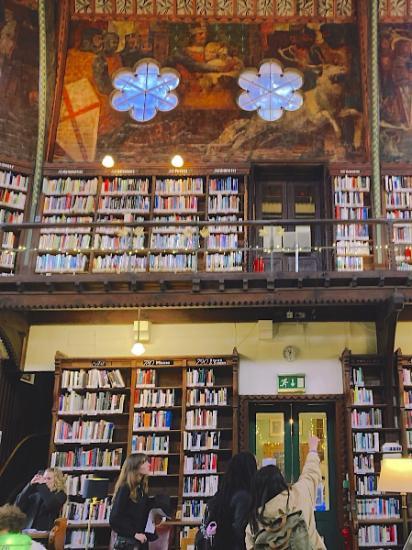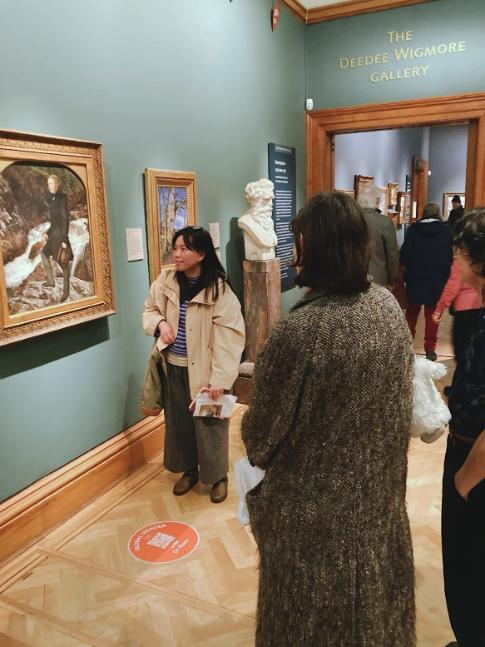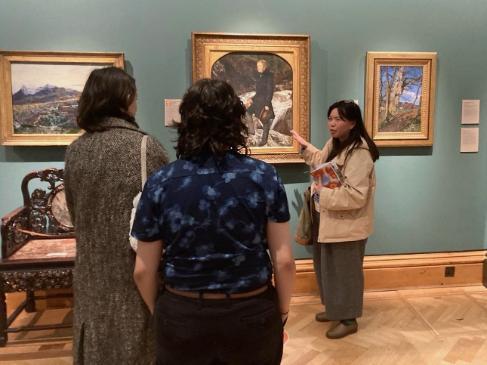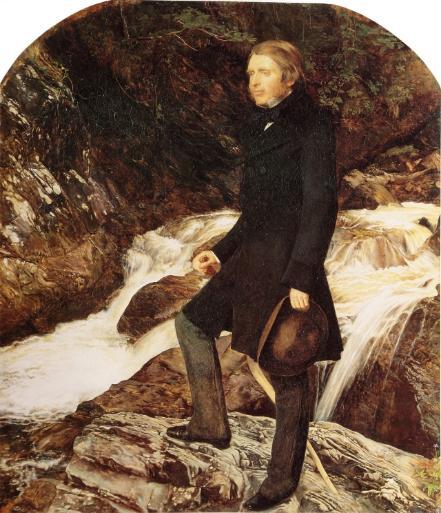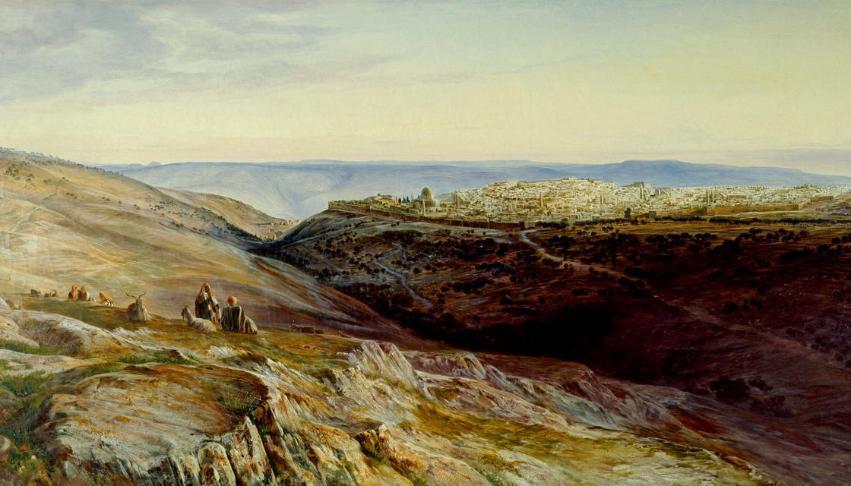During Reading Week, a group of English students went to Oxford as part of a field trip for the unit Writing for Art. Led by tutors Dr Deborah Lam and Dr James Harrison, the group had the rare opportunity to see the murals at the Oxford Union’s Old Library painted by Pre-Raphaelite artists, followed by a visit to the Ashmolean Museum to see the art discussed in seminars in person.
Writing for Art is a specialisation unit for third year and Masters-level students that engages with the relationship between literature and the plastic arts. Students had studied Pre-Raphaelitism earlier in the term, and now had the chance to see a famous example of one of the founders of the Pre-Raphaelite Brotherhood Dante Gabriel Rossetti collaborating with second generation Pre-Raphaelites such as Edward Burne-Jones and William Morris. Independent explorations of the murals at the Oxford Union Library were interspersed by an on-site talk by Dr Lam to contextualise the joys and tribulations of working on such a collaborative project.
Rossetti recruited Burne-Jones and Morris, along with other artists Arthur Hughes and Valentine Prinsep, Rodham Spencer Stanhope and John Hungerford Pollen, to join him in painting the ten bays with a series of Arthurian motifs from Thomas Malory’s Le Morte d’Arthur after receiving the commission for the murals project in 1857. Ambitious good intentions were quickly met with a host of problems, however: while many of the group of seven were familiar with painting on canvas, they faced problems working with brick and plaster as they were inexperienced in painting on architectural surfaces. Looking at the faded and degraded murals as visual evidence of the motley crew’s inexperience over a century and a half later, Alice Hargreaves muses that, ‘Learning about the materials of the murals, about how the artists struggled to paint over brick seemed to ground artists I’ve often thought of as existing long ago in the present. It was amusing to see the faded work, feeling some sort of connection to renowned artists whose difficulties are less often discussed. I liked hearing that they were probably drunk most of the time.’
‘It was great to visually experience an aspect of art history that we had studied on the course, helping to bring to life the learning,’ reflects Lucy Freeman, ‘Having a contextual understanding of [the Arthurian motifs] really helped to develop my understanding of the murals and the challenges that Rossetti and co. faced when painting them. The discussion was also useful as it helped me to think about art composition and intention.’ Work on the murals was made even more difficult as each bay is punctuated by ornate windows, letting in light that made it hard to see what they were painting. It was similarly difficult to view the murals in the morning, but students were able to appreciate the challenges the artists’ faced. Despite these issues, ‘it was a treat and a privilege to be able to view such an interesting display of art history’, Lucy says.
The field trip then continued with a visit to the Ashmolean Museum. Having studied Ruskin’s essay ‘The Nature of Gothic’ in a previous week’s seminar, it was time to face the man himself. After lunch, the visit to the Ashmolean began with a gallery talk by Dr Lam about the portrait of the art critic John Ruskin at Glenfinlas, painted by John Everett Millais while he accompanied Ruskin and wife Effie (née Gray) to the Trossachs in Scotland. Ruskin became quite excited at the prospect of Millais painting water in his portrait, writing that ‘the foam of torrent will be something quite new in art’. ‘I had never thought about how difficult it is to paint something as fluid as water. Deborah’s talk was really enlightening,’ a student Anna Johnson remarks: ‘It contextualised the painting in a way that was far more enriching than looking it up online or seeing a photo of it on a PowerPoint slide.’
Connecting the two seminars on Ruskin and the Pre-Raphaelites, students learned about the interconnected social circles of artists and art critics, and just how entangled and messy those relationships could be. About the painting, Isabella Midgley remarked that, ‘It was interesting looking at a piece of work by someone [Ruskin] admired so much and whose art centred around Ruskin’s ideals so much, especially as it was a painting about Ruskin himself. I also enjoyed finding out the crazy backstory between him and Millais.’ Dr Harrison provided intriguing background for the painting, explaining that soon after their trip to Glenfinlas, Ruskin’s marriage to Gray would be annulled and Gray would marry Millais the following year.
Students were then given the opportunity to explore the Ashmolean in pairs. Rosie Thomas explained that she ‘enjoyed seeing Turner paintings and the Pre-Raphaelite room’ and enjoyed ‘the mixture of the briefing and informative talks by Deborah, followed by independent study and the opportunity to pursue something new […] discussing art in pairs gives [me] new insight into what my peers think, and other ways of approaching a painting I would not have thought of by myself’.
Students were struck by the importance of experiencing art in person, with Isabella singling out a large landscape by Victorian artist and poet Edward Lear: ‘I loved the painting of Jerusalem and seeing it in such a big scale took my breath away.’ Another student Michael Sharratt remarked that, ‘The combination of guided talks alongside independent viewing really helped me engage with the artwork in the best possible way […] I was helped to consider artworks in ways I likely wouldn’t have in another context.’
Students felt ‘really grateful that [they] had the chance to go to see the murals and the museum or even simply had the chance to go to Oxford for free.’ ‘As an exchange student, I’ve always wanted to go, and I’m very grateful to the university and my teachers for giving me the opportunity to go,’ Noémie Wanko says. ‘I think this is a hugely beneficial trip for the unit because it helped to bring the images we were discussing to life,’ Lucy says reflectively, ‘As important as it is to read and discuss art [in] a seminar room, I think it is fundamental to actually go and see art in person.’

